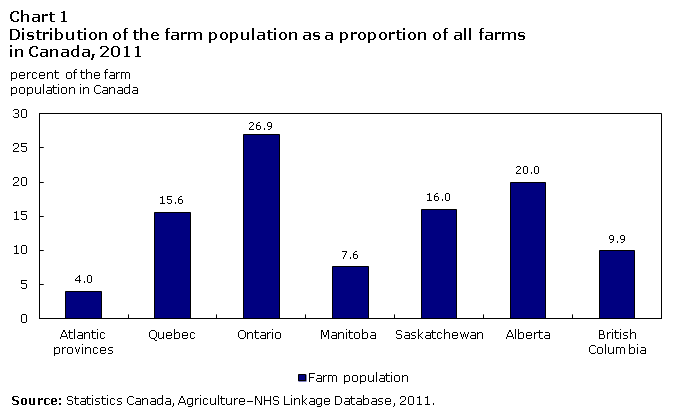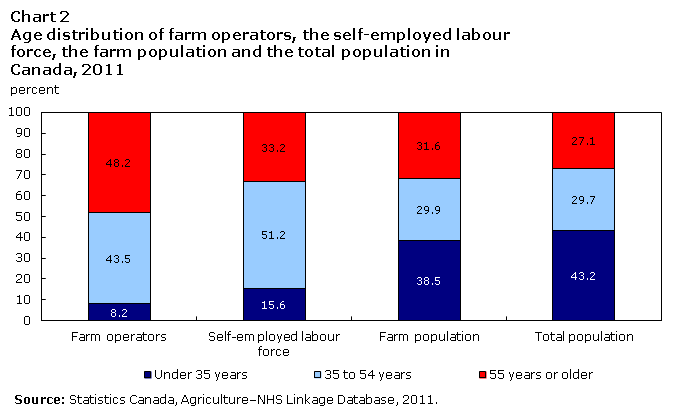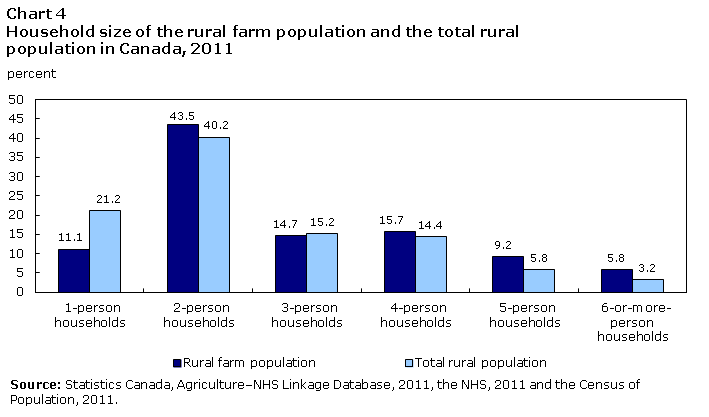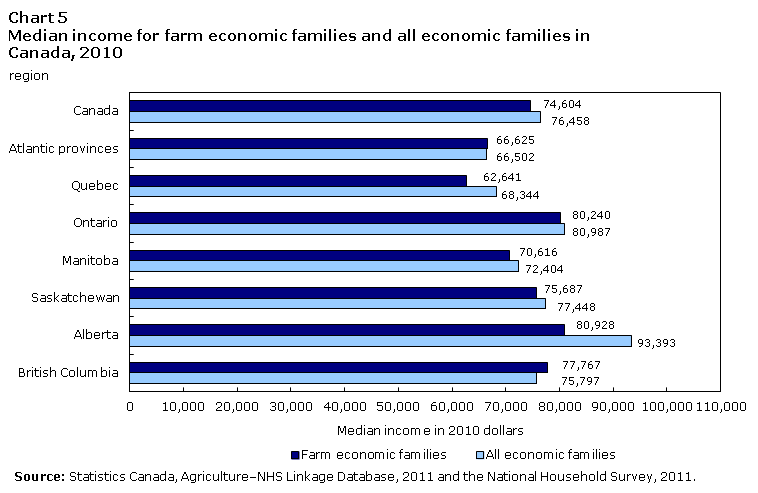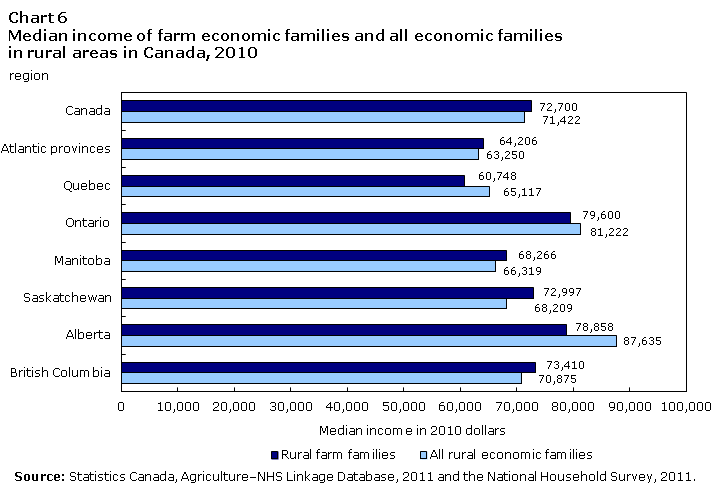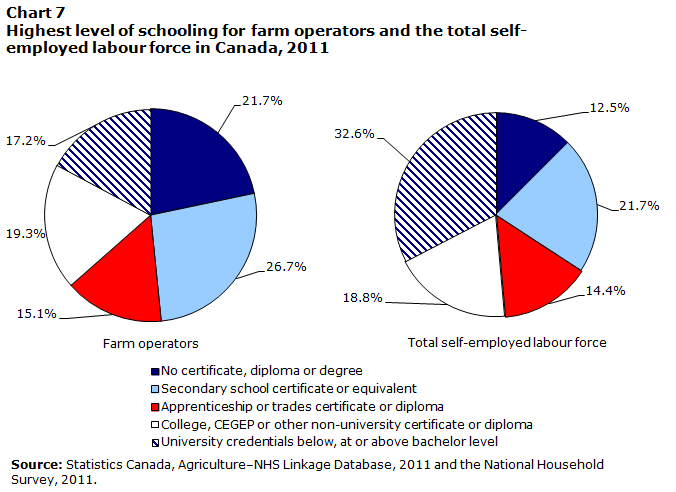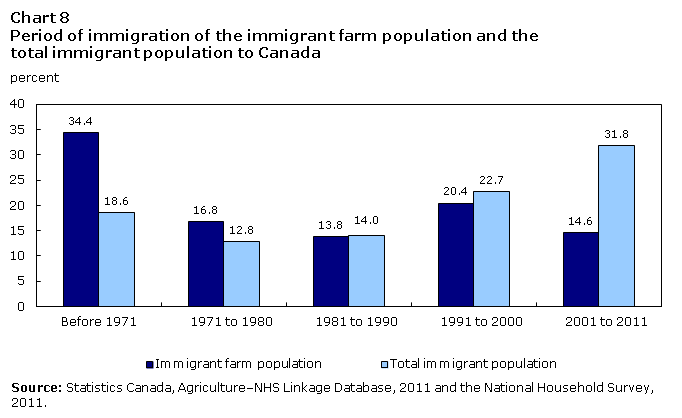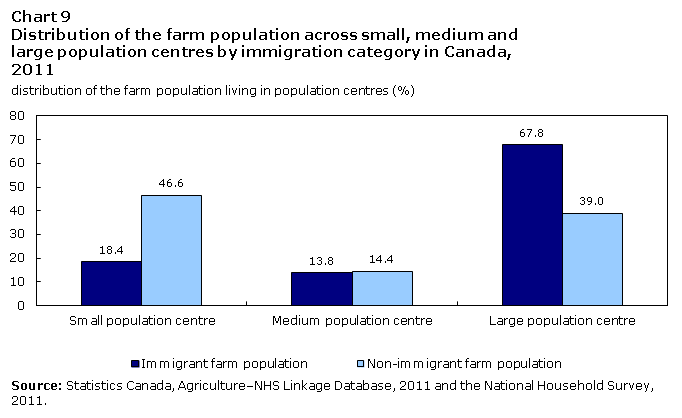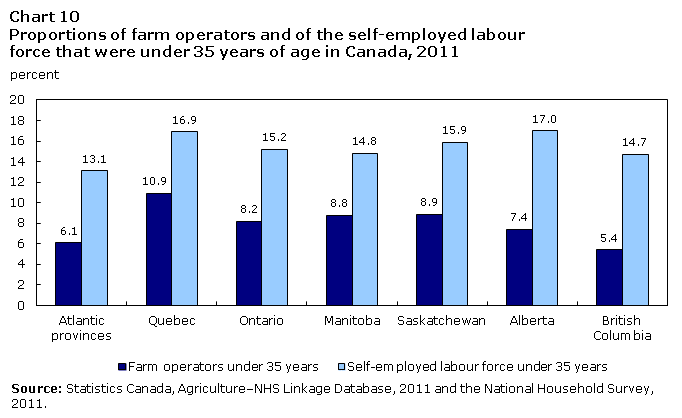Monthly Retail Trade Survey (MRTS) Data Quality Statement
Objectives, uses and users
Concepts, variables and classifications
Coverage and frames
Sampling
Questionnaire design
Response and non-response
Data collection and capture operations
Editing
Imputation
Estimation
Revisions and seasonal adjustment
Data quality evaluation
Disclosure control
1. Objectives, uses and users
1.1. Objective
The Monthly Retail Trade Survey (MRTS) provides information on the performance of the retail trade sector on a monthly basis, and when combined with other statistics, represents an important indicator of the state of the Canadian economy.
1.2. Uses
The estimates provide a measure of the health and performance of the retail trade sector. Information collected is used to estimate level and monthly trend for retail sales. At the end of each year, the estimates provide a preliminary look at annual retail sales and performance.
1.3. Users
A variety of organizations, sector associations, and levels of government make use of the information. Retailers rely on the survey results to compare their performance against similar types of businesses, as well as for marketing purposes. Retail associations are able to monitor industry performance and promote their retail industries. Investors can monitor industry growth, which can result in better access to investment capital by retailers. Governments are able to understand the role of retailers in the economy, which aids in the development of policies and tax incentives. As an important industry in the Canadian economy, governments are able to better determine the overall health of the economy through the use of the estimates in the calculation of the nation’s Gross Domestic Product (GDP).
2. Concepts, variables and classifications
2.1. Concepts
The retail trade sector comprises establishments primarily engaged in retailing merchandise, generally without transformation, and rendering services incidental to the sale of merchandise.
The retailing process is the final step in the distribution of merchandise; retailers are therefore organized to sell merchandise in small quantities to the general public. This sector comprises two main types of retailers, that is, store and non-store retailers. The MRTS covers only store retailers. Their main characteristics are described below. Store retailers operate fixed point-of-sale locations, located and designed to attract a high volume of walk-in customers. In general, retail stores have extensive displays of merchandise and use mass-media advertising to attract customers. They typically sell merchandise to the general public for personal or household consumption, but some also serve business and institutional clients. These include establishments such as office supplies stores, computer and software stores, gasoline stations, building material dealers, plumbing supplies stores and electrical supplies stores.
In addition to selling merchandise, some types of store retailers are also engaged in the provision of after-sales services, such as repair and installation. For example, new automobile dealers, electronic and appliance stores and musical instrument and supplies stores often provide repair services, while floor covering stores and window treatment stores often provide installation services. As a general rule, establishments engaged in retailing merchandise and providing after sales services are classified in this sector. Catalogue sales showrooms, gasoline service stations, and mobile home dealers are treated as store retailers.
2.2. Variables
Sales are defined as the sales of all goods purchased for resale, net of returns and discounts. This includes commission revenue and fees earned from selling goods and services on account of others, such as selling lottery tickets, bus tickets, and phone cards. It also includes parts and labour revenue from repair and maintenance; revenue from rental and leasing of goods and equipment; revenues from services, including food services; sales of goods manufactured as a secondary activity; and the proprietor’s withdrawals, at retail, of goods for personal use. Other revenue from rental of real estate, placement fees, operating subsidies, grants, royalties and franchise fees are excluded.
Trading Location is the physical location(s) in which business activity is conducted in each province and territory, and for which sales are credited or recognized in the financial records of the company. For retailers, this would normally be a store.
Constant Dollars: The value of retail trade is measured in two ways; including the effects of price change on sales and net of the effects of price change. The first measure is referred to as retail trade in current dollars and the latter as retail trade in constant dollars. The method of calculating the current dollar estimate is to aggregate the weighted value of sales for all retail outlets. The method of calculating the constant dollar estimate is to first adjust the sales values to a base year, using the Consumer Price Index, and then sum up the resulting values.
2.3. Classification
The Monthly Retail Trade Survey is based on the definition of retail trade under the NAICS (North American Industry Classification System). NAICS is the agreed upon common framework for the production of comparable statistics by the statistical agencies of Canada, Mexico and the United States. The agreement defines the boundaries of twenty sectors. NAICS is based on a production-oriented, or supply based conceptual framework in that establishments are groups into industries according to similarity in production processes used to produce goods and services.
Estimates appear for 21 industries based on special aggregations of the 2012 North American Industry Classification System (NAICS) industries. The 21 industries are further aggregated to 11 sub-sectors.
Geographically, sales estimates are produced for Canada and each province and territory.
3. Coverage and frames
Statistics Canada’s Business Register ( BR) provides the frame for the Monthly Retail Trade Survey. The BR is a structured list of businesses engaged in the production of goods and services in Canada. It is a centrally maintained database containing detailed descriptions of most business entities operating within Canada. The BR includes all incorporated businesses, with or without employees. For unincorporated businesses, the BR includes all employers with businesses, and businesses with no employees with annual sales that have a Goods and Services Tax (GST) or annual revenue that declares individual taxes. annual sales greater than $30,000 that have a Goods and Services Tax (GST) account (the BR does not include unincorporated businesses with no employees and with annual sales less than $30,000).
The businesses on the BR are represented by a hierarchical structure with four levels, with the statistical enterprise at the top, followed by the statistical company, the statistical establishment and the statistical location. An enterprise can be linked to one or more statistical companies, a statistical company can be linked to one or more statistical establishments, and a statistical establishment to one or more statistical locations.
The target population for the MRTS consists of all statistical establishments on the BR that are classified to the retail sector using the North American Industry Classification System (NAICS) (approximately 200,000 establishments). The NAICS code range for the retail sector is 441100 to 453999. A statistical establishment is the production entity or the smallest grouping of production entities which: produces a homogeneous set of goods or services; does not cross provincial boundaries; and provides data on the value of output, together with the cost of principal intermediate inputs used, along with the cost and quantity of labour used to produce the output. The production entity is the physical unit where the business operations are carried out. It must have a civic address and dedicated labour.
The exclusions to the target population are ancillary establishments (producers of services in support of the activity of producing goods and services for the market of more than one establishment within the enterprise, and serves as a cost centre or a discretionary expense centre for which data on all its costs including labour and depreciation can be reported by the business), future establishments, establishments with a missing or a zero gross business income (GBI) value on the BR and establishments in the following non-covered NAICS:
- 4541 (electronic shopping and mail-order houses)
- 4542 (vending machine operators)
- 45431 (fuel dealers)
- 45439 (other direct selling establishments)
4. Sampling
The MRTS sample consists of 10,000 groups of establishments (clusters) classified to the Retail Trade sector selected from the Statistics Canada Business Register. A cluster of establishments is defined as all establishments belonging to a statistical enterprise that are in the same industrial group and geographical region. The MRTS uses a stratified design with simple random sample selection in each stratum. The stratification is done by industry groups (the mainly, but not only four digit level NAICS), and the geographical regions consisting of the provinces and territories, as well as three provincial sub-regions. We further stratify the population by size.
The size measure is created using a combination of independent survey data and three administrative variables: the annual profiled revenue, the GST sales expressed on an annual basis, and the declared tax revenue (T1 or T2). The size strata consist of one take-all (census), at most, two take-some (partially sampled) strata, and one take-none (non-sampled) stratum. Take-none strata serve to reduce respondent burden by excluding the smaller businesses from the surveyed population. These businesses should represent at most ten percent of total sales. Instead of sending questionnaires to these businesses, the estimates are produced through the use of administrative data.
The sample was allocated optimally in order to reach target coefficients of variation at the national, provincial/territorial, industrial, and industrial groups by province/territory levels. The sample was also inflated to compensate for dead, non-responding, and misclassified units.
MRTS is a repeated survey with maximisation of monthly sample overlap. The sample is kept month after month, and every month new units are added (births) to the sample. MRTS births, i.e., new clusters of establishment(s), are identified every month via the BR’s latest universe. They are stratified according to the same criteria as the initial population. A sample of these births is selected according to the sampling fraction of the stratum to which they belong and is added to the monthly sample. Deaths occur on a monthly basis. A death can be a cluster of establishment(s) that have ceased their activities (out-of-business) or whose major activities are no longer in retail trade (out-of-scope). The status of these businesses is updated on the BR using administrative sources and survey feedback, including feedback from the MRTS. Methods to treat dead units and misclassified units are part of the sample and population update procedures.
5. Questionnaire design
The Monthly Retail Trade Survey incorporates the following sub-surveys:
Monthly Retail Trade Survey - R8
Monthly Retail Trade Survey (with inventories) – R8
Survey of Sales and Inventories of Alcoholic Beverages
The questionnaires collect monthly data on retail sales and the number of trading locations by province or territory and inventories of goods owned and intended for resale from a sample of retailers. The items on the questionnaires have remained unchanged for several years. For the 2004 redesign, the general questionnaires were subject to cosmetic changes only. The questionnaire for Sales and Inventories of Alcoholic Beverages underwent more extensive changes. The modifications were discussed withstakeholders and the respondents were given an opportunity to comment before the new questionnaire was finalized. If further changes are needed to any of the questionnaires, proposed changes would go through a review committee and a field test with respondents and data users to ensure its relevancy.
6. Response and non-response
6.1. Response and non-response
Despite the best efforts of survey managers and operations staff to maximize response in the MRTS, some non-response will occur. For statistical establishments to be classified as responding, the degree of partial response (where an accurate response is obtained for only some of the questions asked a respondent) must meet a minimum threshold level below which the response would be rejected and considered a unit non-response. In such an instance, the business is classified as not having responded at all.
Non-response has two effects on data: first it introduces bias in estimates when non-respondents differ from respondents in the characteristics measured; and second, it contributes to an increase in the sampling variance of estimates because the effective sample size is reduced from that originally sought.
The degree to which efforts are made to get a response from a non-respondent is based on budget and time constraints, its impact on the overall quality and the risk of non-response bias.
The main method to reduce the impact of non-response at sampling is to inflate the sample size through the use of over-sampling rates that have been determined from similar surveys.
Besides the methods to reduce the impact of non-response at sampling and collection, the non-responses to the survey that do occur are treated through imputation. In order to measure the amount of non-response that occurs each month, various response rates are calculated. For a given reference month, the estimation process is run at least twice (a preliminary and a revised run). Between each run, respondent data can be identified as unusable and imputed values can be corrected through respondent data. As a consequence, response rates are computed following each run of the estimation process.
For the MRTS, two types of rates are calculated (un-weighted and weighted). In order to assess the efficiency of the collection process, un-weighted response rates are calculated. Weighted rates, using the estimation weight and the value for the variable of interest, assess the quality of estimation. Within each of these types of rates, there are distinct rates for units that are surveyed and for units that are only modeled from administrative data that has been extracted from GST files.
To get a better picture of the success of the collection process, two un-weighted rates called the ‘collection results rate’ and the ‘extraction results rate’ are computed. They are computed by dividing the number of respondents by the number of units that we tried to contact or tried to receive extracted data for them. Non-monthly reporters (respondents with special reporting arrangements where they do not report every month but for whom actual data is available in subsequent revisions) are excluded from both the numerator and denominator for the months where no contact is performed.
In summary, the various response rates are calculated as follows:
Weighted rates:
Survey Response rate (estimation) =
Sum of weighted sales of units with response status i / Sum of survey weighted sales
where i = units that have either reported data that will be used in estimation or are converted refusals, or have reported data that has not yet been resolved for estimation.
Admin Response rate (estimation) =
Sum of weighted sales of units with response status ii / Sum of administrative weighted sales
where ii = units that have data that was extracted from administrative files and are usable for estimation.
Total Response rate (estimation) =
Sum of weighted sales of units with response status i or response status ii / Sum of all weighted sales
Un-weighted rates:
Survey Response rate (collection) =
Number of questionnaires with response status iii/ Number of questionnaires with response status iv
where iii = units that have either reported data (unresolved, used or not used for estimation) or are converted refusals.
where iv = all of the above plus units that have refused to respond, units that were not contacted and other types of non-respondent units.
Admin Response rate (extraction) =
Number of questionnaires with response status vi/ Number of questionnaires with response status vii
where vi = in-scope units that have data (either usable or non-usable) that was extracted from administrative files
where vii = all of the above plus units that have refused to report to the administrative data source, units that were not contacted and other types of non-respondent units.
(% of questionnaire collected over all in-scope questionnaires)
Collection Results Rate =
Number of questionnaires with response status iii / Number of questionnaires with response status viii
where iii = same as iii defined above
where viii = same as iv except for the exclusion of units that were contacted because their response is unavailable for a particular month since they are non-monthly reporters.
Extraction Results Rate =
Number of questionnaires with response status ix / Number of questionnaires with response status vii
where ix = same as vi with the addition of extracted units that have been imputed or were out of scope
where vii = same as vii defined above
(% of questionnaires collected over all questionnaire in-scope we tried to collect)
All the above weighted and un-weighted rates are provided at the industrial group, geography and size group level or for any combination of these levels.
Use of Administrative Data
Managing response burden is an ongoing challenge for Statistics Canada. In an attempt to alleviate response burden and survey costs, especially for smaller businesses, the MRTS has reduced the number of simple establishments in the sample that are surveyed directly and instead derives sales data for these establishments from Goods and Service Tax (GST) files using a statistical model. The model accounts for differences between sales and revenue (reported for GST purposes) as well as for the time lag between the survey reference period and the reference period of the GST file.
For more information on the methodology used for modeling sales from administrative data sources, refer to ‘Monthly Retail Trade Survey: Use of Administrative Data’ under ‘Documentation’ of the IMDB.
Table 1 contains the weighted response rates for all industry groups as well as for total retail trade for each province and territory. For more detailed weighted response rates, please contact the Marketing and Dissemination Section at (613) 951-3549, toll free: 1-877-421-3067 or by e-mail at retailinfo@statcan.
6.2. Methods used to reduce non-response at collection
Significant effort is spent trying to minimize non-response during collection. Methods used, among others, are interviewer techniques such as probing and persuasion, repeated re-scheduling and call-backs to obtain the information, and procedures dealing with how to handle non-compliant (refusal) respondents.
If data are unavailable at the time of collection, a respondent's best estimates are also accepted, and are subsequently revised once the actual data become available.
To minimize total non-response for all variables, partial responses are accepted. In addition, questionnaires are customized for the collection of certain variables, such as inventory, so that collection is timed for those months when the data are available.
Finally, to build trust and rapport between the interviewers and respondents, cases are generally assigned to the same interviewer each month. This action establishes a personal relationship between interviewer and respondent, and builds respondent trust.
7. Data collection and capture operations
Collection of the data is performed by Statistics Canada’s Regional Offices.
| Weighted Response Rates | |||
|---|---|---|---|
| Total | Survey | Administrative | |
| NAICS - Canada | |||
| Motor Vehicle and Parts Dealers | 92.3 | 93.0 | 52.4 |
| Automobile Dealers | 93.6 | 93.9 | 49.6 |
| New Car Dealers | 95.1 | 95.1 | Note ...: not applicable |
| Used Car Dealers | 71.0 | 74.0 | 49.6 |
| Other Motor Vehicle Dealers | 73.5 | 74.1 | 67.4 |
| Automotive Parts, Accessories and Tire Stores | 85.8 | 91.6 | 43.5 |
| Furniture and Home Furnishings Stores | 87.1 | 91.6 | 40.3 |
| Furniture Stores | 92.4 | 93.7 | 64.3 |
| Home Furnishings Stores | 77.9 | 87.3 | 29.3 |
| Electronics and Appliance Stores | 88.4 | 89.1 | 51.3 |
| Building Material and Garden Equipment Dealers | 86.2 | 89.6 | 42.5 |
| Food and Beverage Stores | 85.0 | 87.6 | 48.8 |
| Grocery Stores | 89.5 | 92.4 | 52.4 |
| Grocery (except Convenience) Stores | 91.8 | 94.5 | 55.8 |
| Convenience Stores | 55.3 | 59.6 | 26.2 |
| Specialty Food Stores | 62.7 | 67.9 | 35.7 |
| Beer, Wine and Liquor Stores | 73.0 | 74.1 | 31.5 |
| Health and Personal Care Stores | 90.9 | 91.4 | 84.1 |
| Gasoline Stations | 81.5 | 83.2 | 57.2 |
| Clothing and Clothing Accessories Stores | 84.3 | 85.0 | 55.8 |
| Clothing Stores | 84.8 | 85.5 | 55.4 |
| Shoe Stores | 80.8 | 81.6 | 20.7 |
| Jewellery, Luggage and Leather Goods Stores | 84.2 | 85.3 | 68.2 |
| Sporting Goods, Hobby, Book and Music Stores | 89.2 | 92.5 | 50.0 |
| General Merchandise Stores | 98.8 | 99.4 | 34.9 |
| Department Stores | 100.0 | 100.0 | Note ...: not applicable |
| Other general merchandise stores | 97.9 | 98.9 | 34.9 |
| Miscellaneous Store Retailers | 73.7 | 77.6 | 37.2 |
| Total | 89.0 | 90.6 | 52.3 |
| Regions | |||
| Newfoundland and Labrador | 89.2 | 90.9 | 30.2 |
| Prince Edward Island | 83.8 | 84.5 | 32.8 |
| Nova Scotia | 87.9 | 89.1 | 47.0 |
| New Brunswick | 86.7 | 88.7 | 45.0 |
| Québec | 90.9 | 92.9 | 57.0 |
| Ontario | 89.7 | 91.6 | 47.0 |
| Manitoba | 82.8 | 83.0 | 65.1 |
| Saskatchewan | 90.7 | 92.6 | 47.0 |
| Alberta | 89.4 | 90.9 | 57.4 |
| British Columbia | 86.0 | 87.2 | 54.9 |
| Yukon Territory | 79.5 | 79.5 | Note ...: not applicable |
| Northwest Territories | 75.0 | 75.0 | Note ...: not applicable |
| Nunavut | 87.8 | 87.8 | Note ...: not applicable |
| ... not applicable | |||
Weighted Response Rates
Respondents are sent a questionnaire or are contacted by telephone to obtain their sales and inventory values, as well as to confirm the opening or closing of business trading locations. Collection of the data begins approximately 7 working days after the end of the reference month and continues for the duration of that month.
New entrants to the survey are introduced to the survey via an introductory letter that informs the respondent that a representative of Statistics Canada will be calling. This call is to introduce the respondent to the survey, confirm the respondent's business activity, establish and begin data collection, as well as to answer any questions that the respondent may have.
8. Editing
Data editing is the application of checks to detect missing, invalid or inconsistent entries or to point to data records that are potentially in error. In the survey process for the MRTS, data editing is done at two different time periods.
First of all, editing is done during data collection. Once data are collected via the telephone, or via the receipt of completed mail-in questionnaires, the data are captured using customized data capture applications. All data are subjected to data editing. Edits during data collection are referred to as field edits and generally consist of validity and some simple consistency edits. They are used to detect mistakes made during the interview by the respondent or the interviewer and to identify missing information during collection in order to reduce the need for follow-up later on. Another purpose of the field edits is to clean up responses. In the MRTS, the current month’s responses are edited against the respondent’s previous month’s responses and/or the previous year’s responses for the current month. Field edits are also used to identify problems with data collection procedures and the design of the questionnaire, as well as the need for more interviewer training.
Follow-up with respondents occurs to validate potential erroneous data following any failed preliminary edit check of the data. Once validated, the collected data is regularly transmitted to the head office in Ottawa.
Secondly, editing known as statistical editing is also done after data collection and this is more empirical in nature. Statistical editing is run prior to imputation in order to identify the data that will be used as a basis to impute non-respondents. Large outliers that could disrupt a monthly trend are excluded from trend calculations by the statistical edits. It should be noted that adjustments are not made at this stage to correct the reported outliers.
The first step in the statistical editing is to identify which responses will be subjected to the statistical edit rules. Reported data for the current reference month will go through various edit checks.
The first set of edit checks is based on the Hidiriglou-Berthelot method whereby a ratio of the respondent’s current month data over historical (last month, same month last year) or auxiliary data is analyzed. When the respondent’s ratio differs significantly from ratios of respondents who are similar in terms of industry and/or geography group, the response is deemed an outlier.
The second set of edits consists of an edit known as the share of market edit. With this method, one is able to edit all respondents, even those where historical and auxiliary data is unavailable. The method relies on current month data only. Therefore, within a group of respondents, that are similar in terms of industrial group and/or geography, if the weighted contribution of a respondent to the group’s total is too large, it will be flagged as an outlier.
For edit checks based on the Hidiriglou-Berthelot method, data that are flagged as an outlier will not be included in the imputation models (those based on ratios). Also, data that are flagged as outliers in the share of market edit will not be included in the imputation models where means and medians are calculated to impute for responses that have no historical responses.
In conjunction with the statistical editing after data collection of reported data, there is also error detection done on the extracted GST data. Modeled data based on the GST are also subject to an extensive series of processing steps which thoroughly verify each record that is the basis for the model as well as the record being modeled. Edits are performed at a more aggregate level (industry by geography level) to detect records which deviate from the expected range, either by exhibiting large month-to-month change, or differing significantly from the remaining units. All data which fail these edits are subject to manual inspection and possible corrective action.
9. Imputation
Imputation in the MRTS is the process used to assign replacement values for missing data. This is done by assigning values when they are missing on the record being edited to ensure that estimates are of high quality and that a plausible, internal consistency is created. Due to concerns of response burden, cost and timeliness, it is generally impossible to do all follow-ups with the respondents in order to resolve missing responses. Since it is desirable to produce a complete and consistent microdata file, imputation is used to handle the remaining missing cases.
In the MRTS, imputation is based on historical data or administrative data (GST sales). The appropriate method is selected according to a strategy that is based on whether historical data is available, auxiliary data is available and/or which reference month is being processed.
There are three types of historical imputation methods. The first type is a general trend that uses one historical data source (previous month, data from next month or data from same month previous year). The second type is a regression model where data from previous month and same month, previous year are used simultaneously. The third type uses the historical data as a direct replacement value for a non-respondent. Depending upon the particular reference month, there is an order of preference that exists so that top quality imputation can result. The historical imputation method that was labelled as the third type above is always the last option in the order for each reference month.
The imputation method using administrative data is automatically selected when historical information is unavailable for a non-respondent. Trends are then applied to the administrative data source (monthly size) depending on whether the structure is simple, e.g. enterprises with only one establishment, or the unit has a more complex structure.
10. Estimation
Estimation is a process that approximates unknown population parameters using only part of the population that is included in a sample. Inferences about these unknown parameters are then made, using the sample data and associated survey design. This stage uses Statistics Canada's Generalized Estimation System (GES).
For retail sales, the population is divided into a survey portion (take-all and take-some strata) and a non-survey portion (take-none stratum). From the sample that is drawn from the survey portion, an estimate for the population is determined through the use of a Horvitz-Thompson estimator where responses for sales are weighted by using the inverses of the inclusion probabilities of the sampled units. Such weights (called sampling weights) can be interpreted as the number of times that each sampled unit should be replicated to represent the entire population. The calculated weighted sales values are summed by domain, to produce the total sales estimates by each industrial group / geographic area combination. A domain is defined as the most recent classification values available from the BR for the unit and the survey reference period. These domains may differ from the original sampling strata because units may have changed size, industry or location. Changes in classification are reflected immediately in the estimates and do not accumulate over time. For the non-survey portion, the sales are estimated with statistical models using monthly GST sales.
For more information on the methodology for modeling sales from administrative data sources which also contributes to the estimates of the survey portion, refer to ‘Monthly Retail Survey: Use of Administrative Data’ under ‘Documentation’ of the IMDB.
The measure of precision used for the MRTS to evaluate the quality of a population parameter estimate and to obtain valid inferences is the variance. The variance from the survey portion is derived directly from a stratified simple random sample without replacement.
Sample estimates may differ from the expected value of the estimates. However, since the estimate is based on a probability sample, the variability of the sample estimate with respect to its expected value can be measured. The variance of an estimate is a measure of the precision of the sample estimate and is defined as the average, over all possible samples, of the squared difference of the estimate from its expected value.
11. Revisions and seasonal adjustment
Revisions in the raw data are required to correct known non-sampling errors. These normally include replacing imputed data with reported data, corrections to previously reported data, and estimates for new births that were not known at the time of the original estimates.
Raw data are revised, on a monthly basis, for the month immediately prior to the current reference month being published. That is, when data for December are being published for the first time, there will also be revisions, if necessary, to the raw data for November. In addition, revisions are made once a year, with the initial release of the February data, for all months in the previous years. The purpose is to correct any significant problems that have been found that apply for an extended period. The actual period of revision depends on the nature of the problem identified, but rarely exceeds three years. The revision period can be extended when historical revisions or restratitfication are done.
Retail trade data are seasonally adjusted using the X12-ARIMA method. This consists of extrapolating a year's worth of raw data with the ARIMA model (auto-regressive integrated moving average model), and of seasonally adjusting the raw time series. Finally, the annual totals of the seasonally adjusted series are forced to the annual totals of the original series.
The seasonally adjusted data also need to be revised. In part, they need to reflect the revisions identified for the raw data. Also, the seasonally adjusted estimates are calculated using X-12-ARIMA, and are sensitive to the most recent values reported in the raw data. For this reason, with the release of each month of new data, the seasonally adjusted values for the previous three months are revised. A seasonally adjusted time series is a time series that has been modified to eliminate the effect of seasonal and calendar influences. For this reason, the seasonally adjusted data allows for more meaningful comparisons of economic conditions from month to month.
Once a year, seasonal adjustments options are reviewed to take into account the most recent data. Revised seasonally adjusted estimates for each month in the previous years are released at the same time as the annual revision to the raw data. The actual period of revision depends on the number years the raw data was revised.
12. Data quality evaluation
The methodology of this survey has been designed to control errors and to reduce their potential effects on estimates. However, the survey results remain subject to errors, of which sampling error is only one component of the total survey error. Sampling error results when observations are made only on a sample and not on the entire population. All other errors arising from the various phases of a survey are referred to as nonsampling errors. For example, these types of errors can occur when a respondent provides incorrect information or does not answer certain questions; when a unit in the target population is omitted or covered more than once; when GST data for records being modeled for a particular month are not representative of the actual record for various reasons; when a unit that is out of scope for the survey is included by mistake or when errors occur in data processing, such as coding or capture errors.
Prior to publication, combined survey results are analyzed for comparability; in general, this includes a detailed review of individual responses (especially for large businesses), general economic conditions and historical trends.
A common measure of data quality for surveys is the coefficient of variation (CV). The coefficient of variation, defined as the standard error divided by the sample estimate, is a measure of precision in relative terms. Since the coefficient of variation is calculated from responses of individual units, it also measures some non-sampling errors.
The formula used to calculate coefficients of variation (CV) as percentages is:
CV (X) = S(X) * 100% / X
where X denotes the estimate and S(X) denotes the standard error of X.
Confidence intervals can be constructed around the estimates using the estimate and the CV. Thus, for our sample, it is possible to state with a given level of confidence that the expected value will fall within the confidence interval constructed around the estimate. For example, if an estimate of $12,000,000 has a CV of 2%, the standard error will be $240,000 (the estimate multiplied by the CV). It can be stated with 68% confidence that the expected values will fall within the interval whose length equals the standard deviation about the estimate, i.e. between $11,760,000 and $12,240,000.
Alternatively, it can be stated with 95% confidence that the expected value will fall within the interval whose length equals two standard deviations about the estimate, i.e. between $11,520,000 and $12,480,000.
Finally, due to the small contribution of the non-survey portion to the total estimates, bias in the non-survey portion has a negligible impact on the CVs. Therefore, the CV from the survey portion is used for the total estimate that is the summation of estimates from the surveyed and non-surveyed portions.
13. Disclosure control
Statistics Canada is prohibited by law from releasing any data which would divulge information obtained under the Statistics Act that relates to any identifiable person, business or organization without the prior knowledge or the consent in writing of that person, business or organization. Various confidentiality rules are applied to all data that are released or published to prevent the publication or disclosure of any information deemed confidential. If necessary, data are suppressed to prevent direct or residual disclosure of identifiable data.
Confidentiality analysis includes the detection of possible "direct disclosure", which occurs when the value in a tabulation cell is composed of a few respondents or when the cell is dominated by a few companies.
